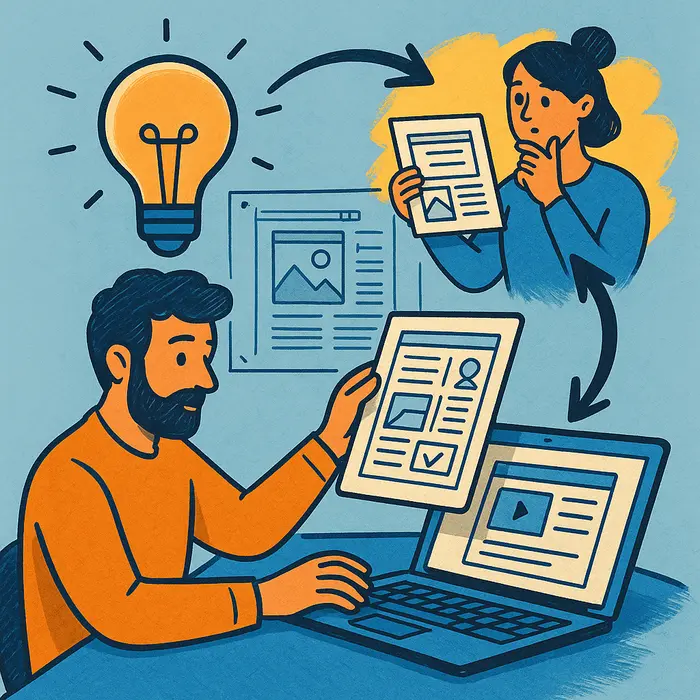Why Use Prototypes in Software Development?
In software development, it’s easy for good ideas to get lost in translation. A prototype bridges that gap—helping teams visualize the product, validate assumptions, and reduce costly misunderstandings before writing a single line of code.
Whether you’re building an app, a feature, or a full platform, prototyping is a smart step that saves time, money, and stress.
What Is a Prototype?
A prototype is an early model or simulation of a product. It can range from rough sketches to interactive mockups or partially functional software. The goal? To show how something will work before it’s fully built.
Prototypes are not the final product—they’re tools for thinking, testing, and communicating.
Why Prototypes Matter in Software Projects
Here are the main benefits:
1. Clarify Requirements Early
Stakeholders often have ideas in their heads—but explaining them in words isn’t always clear. A prototype brings those ideas to life so everyone can see and discuss the same thing.
Without prototyping: Teams might build what they think the user wants.
With prototyping: Teams confirm what users actually want—before development begins.
2. Save Time and Money
Fixing problems during development is expensive. Catching those issues early with a prototype helps you avoid rework and delays.
Think of it as testing your blueprint before building the house.
3. Improve User Experience
You can use prototypes to get feedback directly from users—before it’s too late to make changes. This means better usability and more valuable features in the final product.
4. Enhance Team Collaboration
Developers, designers, product managers, and stakeholders all work better when they can point to something concrete. Prototypes provide a shared language for discussing features and priorities.
5. Support Agile and Iterative Development
Prototypes fit naturally into Agile workflows. You can create, test, and refine features in short cycles—reducing risk and improving results.
Types of Prototypes in Software Development
| Type | Description | When to Use |
|---|---|---|
| Low-Fidelity | Sketches or wireframes | Early ideation and feedback |
| Medium-Fidelity | Clickable mockups with limited design | Basic user flow testing |
| High-Fidelity | Interactive, detailed, realistic simulations | Final validation and handoff to devs |
| Code Prototype | Rough code implementation of a feature | Technical feasibility or performance testing |
How to Use Prototyping in Your Process
Here’s a simple framework:
- Define the purpose – What are you trying to learn or validate?
- Choose the fidelity – Start low, increase fidelity as confidence grows.
- Build quickly – Don’t over-invest. Aim for speed, not perfection.
- Test with real users or stakeholders
- Gather feedback and iterate
Tools for Creating Prototypes
Popular tools include:
- Figma – Ideal for UI/UX design and interactive mockups
- Adobe XD – Great for visual prototypes
- Balsamiq – Simple wireframes and low-fi sketches
- Axure – For more complex, logic-driven prototypes
- InVision – For collaborative, clickable mockups
For coded prototypes: HTML/CSS/JS, or frameworks like React or Flutter.
Common Mistakes to Avoid
- Overbuilding the prototype—keep it simple
- Skipping feedback—prototypes are only useful if tested
- Confusing prototype with final product—set expectations clearly
Summary: Prototyping as a Strategic Advantage
Prototypes aren’t just design extras—they’re essential problem-solving tools in modern software development. They help teams move faster, make better decisions, and build products
No related posts found.
